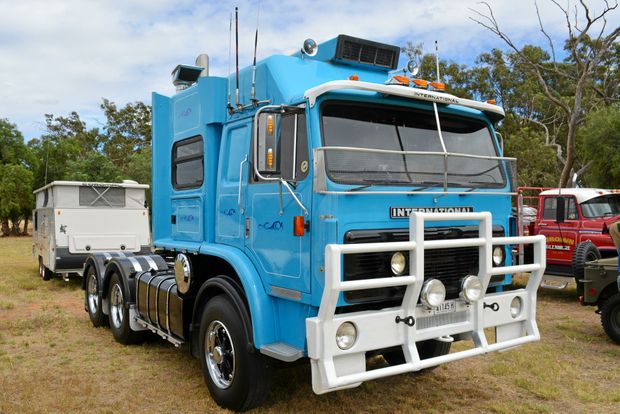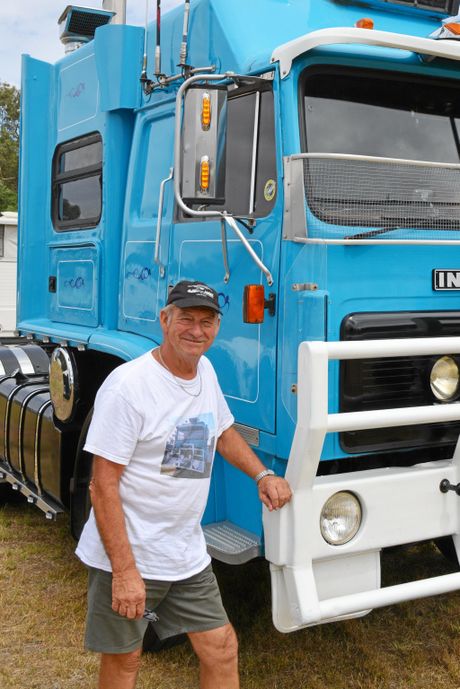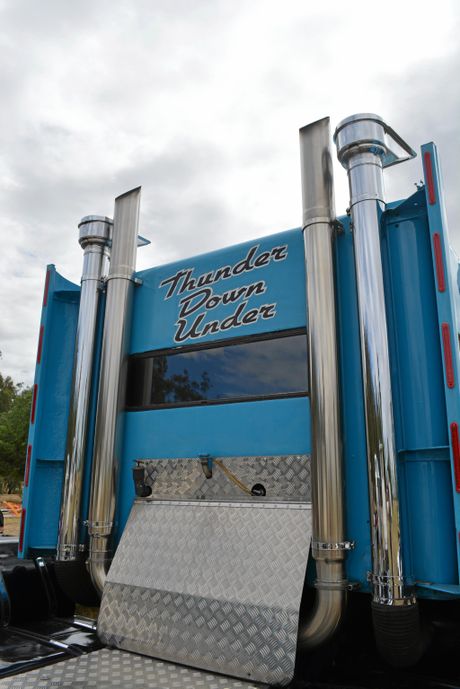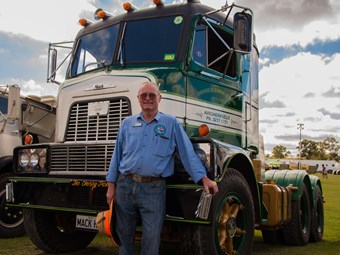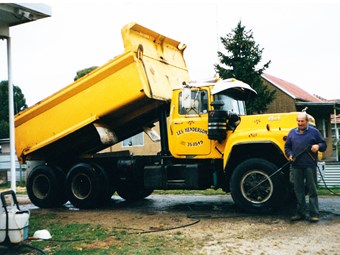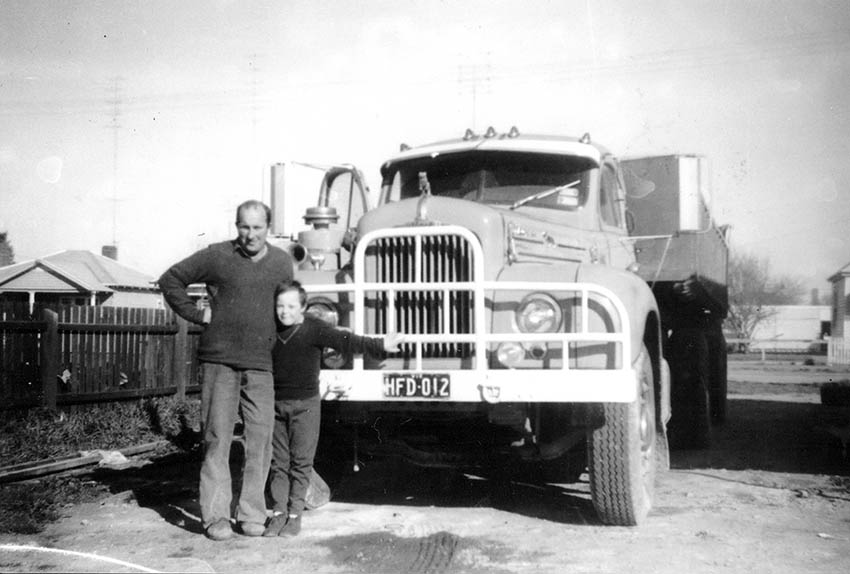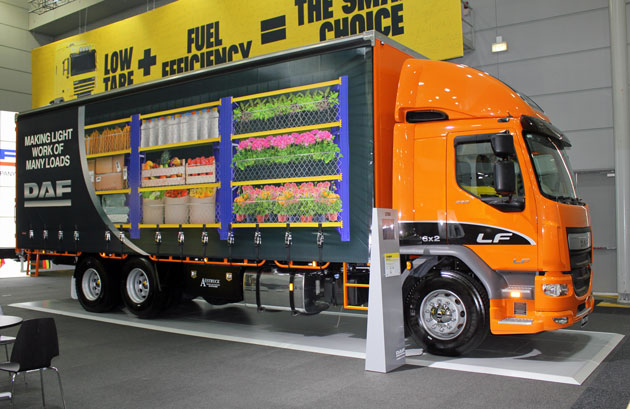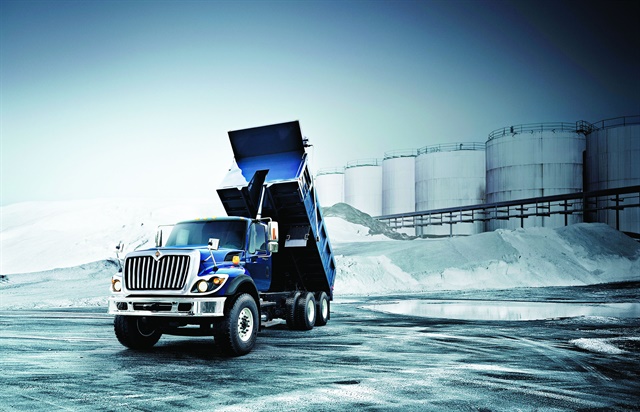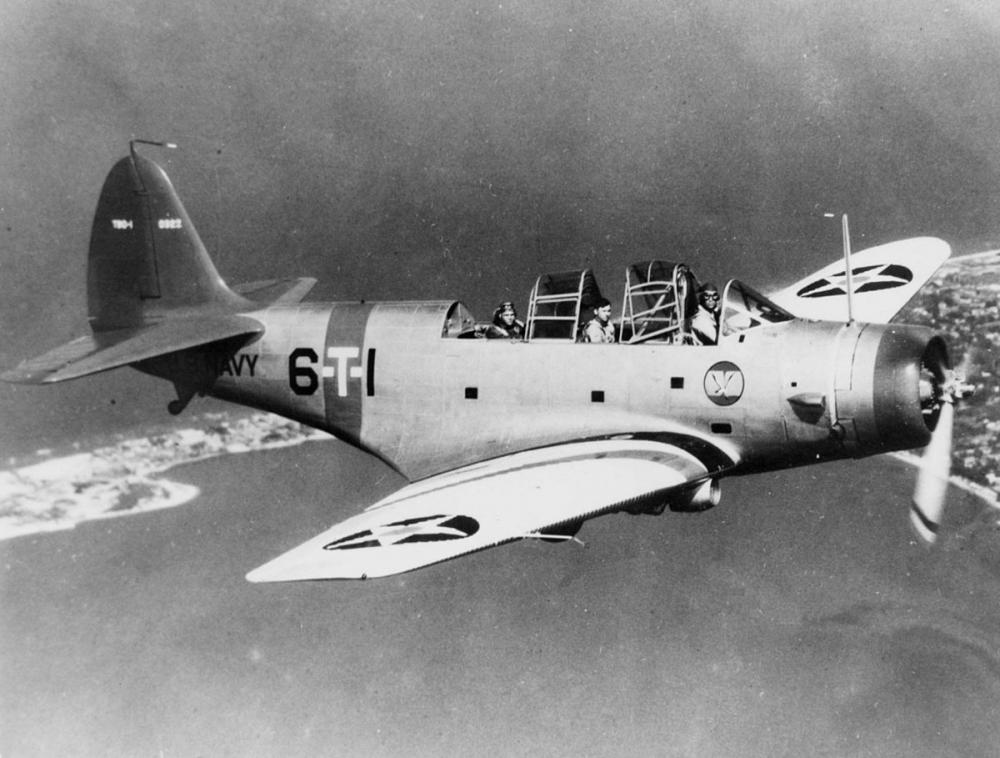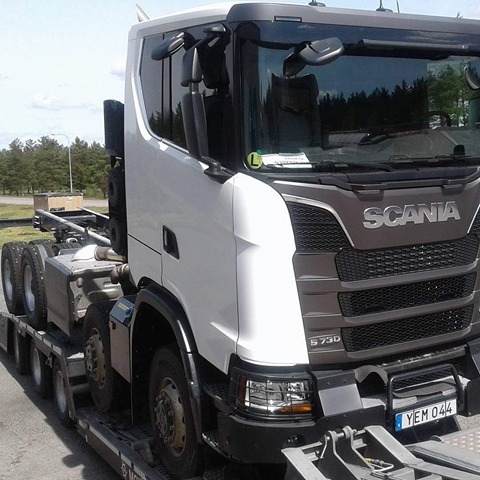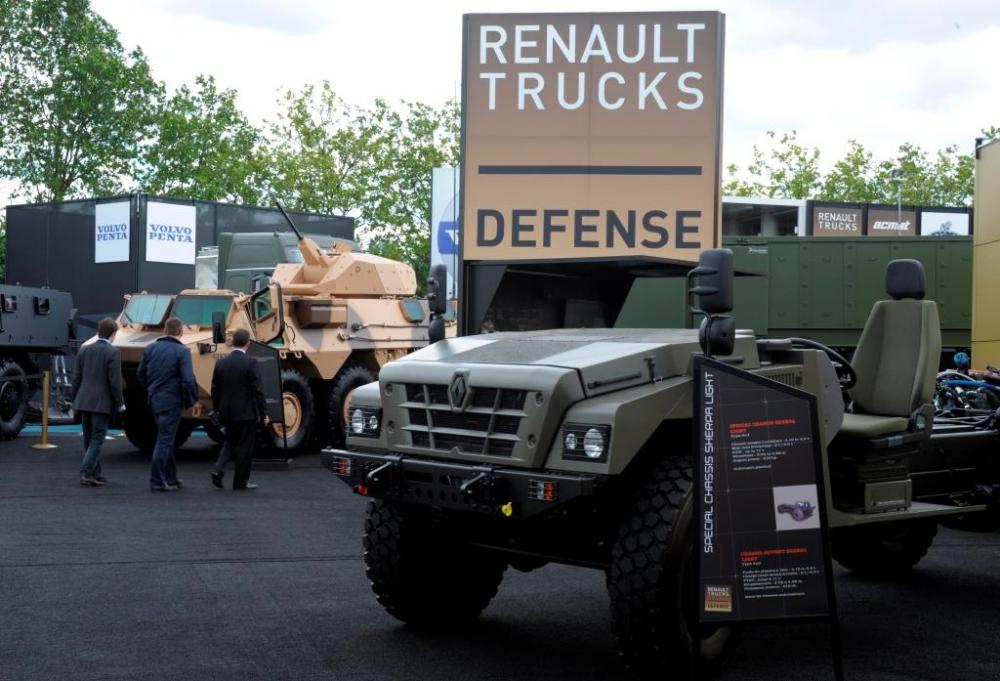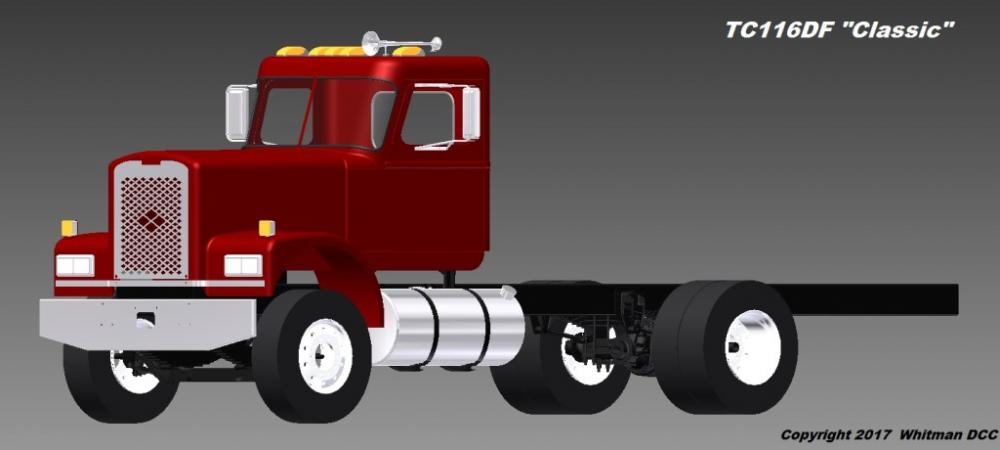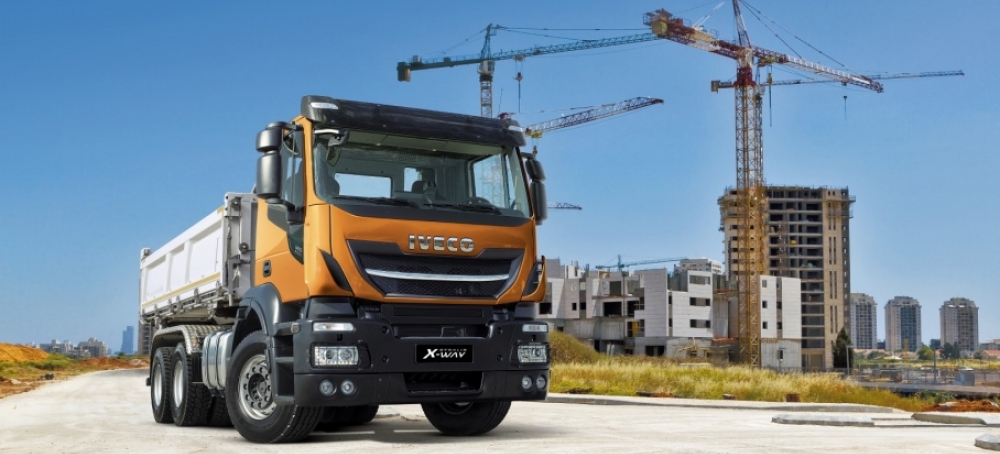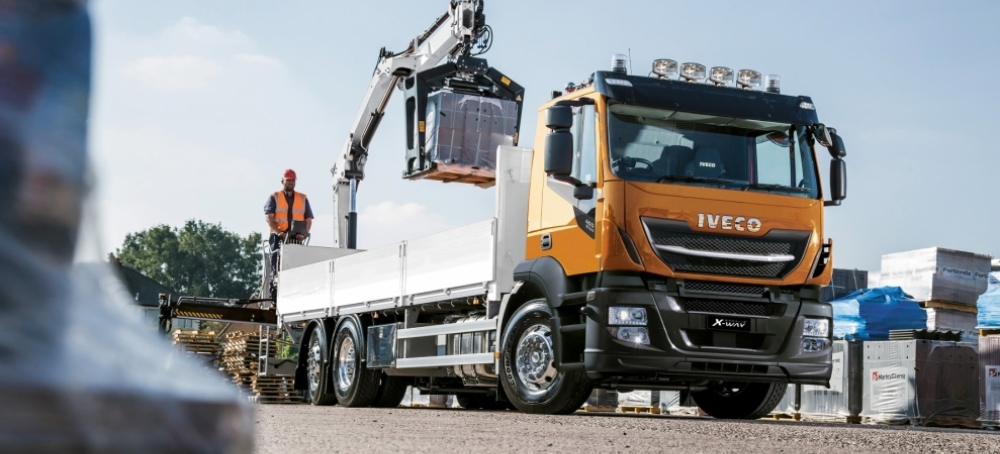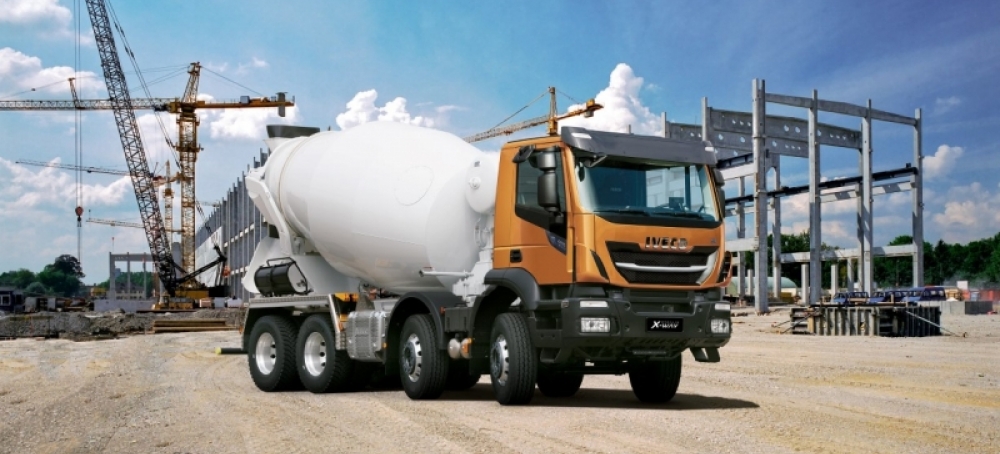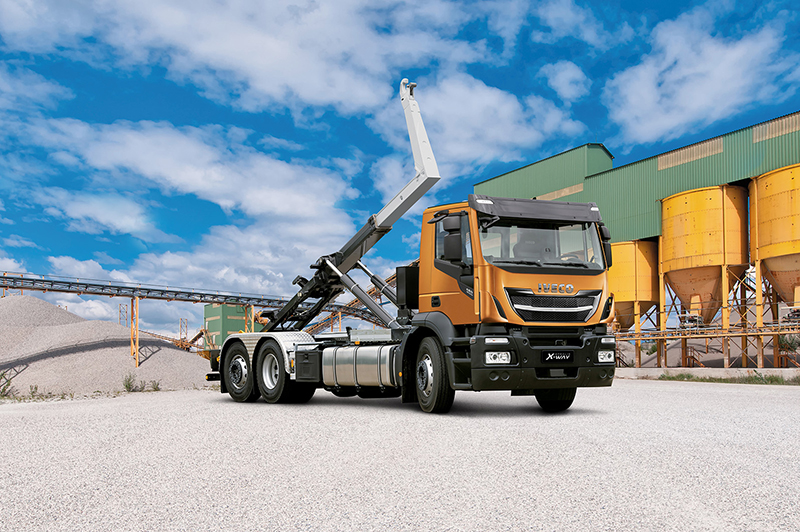
kscarbel2
Moderator-
Posts
18,893 -
Joined
-
Days Won
114
Content Type
Profiles
Forums
Gallery
Events
Blogs
BMT Wiki
Collections
Store
Everything posted by kscarbel2
-
But what goes untold is the quality problems that those mass-produced Ford B-24s had. Whereas the quality of the B17 was quite good, the B24 made few friends with the men who crewed them. And that's in addition to the fact that the design of Consolidated B-24 "Liberator" was less than stellar. This is all one reason why the Air Force chose the B-29 over the B-32. The only thing about the B-24 is it had a larger bomb load capacity then the B-17. The B-17 was actually based on the XB-15, which was a significantly larger aircraft.
-
MACK filters
kscarbel2 replied to Lmackattack's topic in Antique and Classic Mack Trucks General Discussion
Why don't you call the Mack brand's customer satisfaction department toll-free at +1 (866) 298-6586 and share your thoughts with them? I'm sure they are anxious to assist you. -
Big Rigs / June 5, 2017 When most people hit the highways of Australia during the "grey nomad" phase of their lives, they usually invest in a Toyota LandCruiser or Nissan Patrol to tow their caravan. But Bob Irwin is a little different, using an International ACCO 3070 to tow his Coromal caravan around the country. Big Rigs caught up with Bob at the Lockhart National Historic Truck and Commercial Vehicle Show earlier this year, one stop on a month-long trip attending historic truck shows around southern New South Wales, with the customised ACCO drawing a steady crowd of onlookers at Lockhart. Hailing from Tahmoor in the New South Wales highlands, 71-year-old Bob has spent his working life in transport, operating Internationals as an owner-driver, firstly with an old "Butterbox" model before moving on to a 555 Cummins-powered ACCO and finally a Cummins 903-powered unit. "I have always been an International man, and never owned anything else," Bob said. He hauled coal and fertiliser between Newcastle, Wollongong and all throughout New South Wales before making a change and taking on coach and bus driving for a number of years. Heading towards retirement and looking about for a project truck, Bob purchased the ACCO and took to progressively restoring and overhauling it, with the refurbished truck first hitting the highway again just prior to the 2015 Haulin' the Hume event. Bob's 1977 ACCO 3070-A was initially built as a single drive unit, with a Cummins 903 under the cab paired up with a 15-speed overdrive gearbox. Over its working life the ACCO was turbocharged and fitted with a lazy axle, clocking up over 2.5 million kilometres transporting Dulux Paint five times a fortnight between Adelaide and Sydney. Upon purchasing the ACCO, which had already been customised with its Aerodyne-style roof and larger sleeper cab, Bob undertook further work to make it stand out from the crowd. "I stripped it down and put new chassis rails through it and tidied it up a lot; I repainted it light blue - it was originally maroon in colour. "I just picked that colour out of a magazine and everyone loves it! I chucked on a lot of chrome and lights on it...and threw on the towbar," he said with a grin. On the side of the truck cleverly designed to make it look like a standard fuel tank is a slide out frame for his truck fridge, "That was a spur-of-the-moment thing to design and put that on, it gets a lot of people in," he commented. With the Cummins 903 originally rated at 350 horsepower, the addition of a turbocharger certainly made a difference to the power getting sent through to the back end. Bob continued, "It's got 525 horses under the cab, the previous owner loved his power! "He also put tall diff in it to get a bit of speed out of it, so she gets up and goes pretty well, she heads up Mt Ousley in top gear." With its custom straight-through exhaust pipes adorning the back to the cab, the engine notes of the Cummins are quite noticeable, especially when the Jacobs engine brake is activated. Breaking out into a smile again, Bob continued, "The pipes come straight out of the turbo and exhaust is straight through, there's no mufflers - when I go down Mt Victoria they can hear me half way down when I am at the top." "They are deadly, when I put them on it just about stands her on her nose!" His tour around southern New South Wales with the 3070 was also seeing him take in shows and events at Griffith, Junee and Harden, and as a member of the Western Sydney Historical Truck Club, he enjoys getting out and about with like-minded enthusiasts. "I follow the shows around a bit and have been helping out this weekend as there's a few of us here - I'm off to Junee next and then Harden and then home. I go to a lot of the local ones and the mateship in the club is good," he said. With the imminent re-launch of the International nameplate onto Australian highways, there will be plenty of people who have a link to the marque going back many decades who will be watching with interest. Bob Irwin is one who has had a connection to the International brand for a number of years and reckons his 40-year old ACCO is hard to beat, concluding our chat by saying, "I'm really happy this is what I do now I'm retired and I just love this thing, and I'm doing something that I have always wanted to do." .
-
Volvo Trucks Australia / June 5, 2017 With a Volvo Gold Service Agreement you're guaranteed the best possible uptime. All preventative maintenance and truck repairs are included - giving you full cost control, worry-free ownership and the time you need to focus on your business. .
-
Owner-Driver / June 6, 2017 Owner//Driver spotted one very unique old banger recently, and caught up with the owner to find out more about it. At the Rocklea Heritage Truck Show this year we came across Rodney Sims and his beautifully restored Mack H67 COE, a model commonly known as a ‘Cherry Picker’ due to its 2.7 metre cab height. This also happens to be one of the two first H67’s brought to Australia and the last remaining right-hand-drive – although there are a few recently imported left-hand-drive models in Rockhampton. Rodney purchased the truck with his wife Janette back in 2015 off Frank Fleming & Sons Pty Ltd, who had painstakingly restored the old Mack. The truck was originally brought to Australia by Anthill Roger & Co in 1962, and these were the first ever cab-over Mack trucks in Australia. Another first was the Mack Thermodyne ENDT-673 engine, which was the first turbo-charged variant made by the manufacturer. After changing hands a couple of times, the truck was purchased by Frank Fleming & Sons Pty Ltd in 1966 with a modest 700,000 miles on the clock. The Flemings owned the truck from then until when Rodney purchased it, which was in part thanks to his fond memories driving it for Frank Fleming & Sons decades ago. "I’d driven this truck and so had my brother, pulling a low loader, about 20 years ago," Rodney explains. "We knew the history of it, we knew the family," When it was converted to right hand drive, the Flemings did the conversion themselves and it wasn’t free of design obstacles. The turbocharger had to be relocated, an air-operated clutch had to be retrofitted, the cooling system modified and the steering box turned upside down. Despite this, the truck hasn’t missed a beat and it served Frank Fleming & Sons as a reliable workhorse until it was retired in the mid 1980’s. Rodney gets this truck out and about as much as he can and while it might not be the quickest banger on the road, he couldn’t be happier with it. "It’s a slow old truck, but I enjoy driving it," he says proudly. .
-
Owner-Driver / June 6, 2017 Retired truckie Les Henderson, 84, reflects on the Tarcutta bog, his reliable Macks, and his enduring love for his wife Bonnie. Les and Bonnie Henderson of Ballarat, Victoria, were newlyweds when they bought their first truck, a KBS7 International, in 1955. Later that year they bought a new Ford V8. Les was driving it interstate in the winter of 1956 when he became stranded at Tarcutta, New South Wales, with hundreds of other truck drivers as they waited for the boggy Hume Highway to be repaired. Les was keen to get home to Ballarat to see Bonnie and their first baby, but police told him he would be stuck at Tarcutta for a day or two. "I was there for eight days," Les recalls. He replaced the Ford with a second-hand Diamond T the following year. His twin brother Graham Henderson also bought a Diamond T, so for a while the twins had a Diamond T each. (Graham founded Henderson Haulage.) In 1960 Les began his long association with the Mack brand, purchasing a 1957 Model B61. There was plenty of interstate work for subcontractors in the 1960s. Bonnie was busy too. By 1967 the couple had four children – Susan, Paul, Judith and Leslie. Luckily the Mack didn’t let the family down. Les was equally impressed with its replacement, a 1966 B61, and their third Mack, a 1979 R Model. All of the Macks were second-hand but they were reliable thanks to Les’ regular maintenance. Inspired by their love of Mack trucks, the Hendersons named their Ballarat home ‘Macksville’. Today their son Leslie (Junior) continues the family’s sand and soil cartage business. Les (Senior) worked until 2010 when Bonnie was diagnosed with dementia. The couple still lives at ‘Macksville’. Les, 84, points out Bonnie looked after their children all those years he was on the road. "And so I’m happy to look after her. Even now, she still says, ‘I love you’." .
-
- 1
-

-
DAF launches new lift-up axle model at Brisbane Truck Show Prime Mover Magazine / June 6, 2017 PACCAR Australia has used the Brisbane Truck Show to give industry a sneak peek at the new DAF FAP LF 280 model, touted for release later in 2017. Showcased alongside the newly launched 510hp version of the DAF CF85, the new LF variant comes with a lift-up axle to ensure it can handle heavier loads while still providing fuel and tyre wear benefits when running with lesser loads. The ‘pusher’ design is said to be especially useful when negotiating uneven surfaces, such as spoon drains. Also on the technology front, the 280HP PACCAR engine is backed by a ZF nine-speed manual transmission. The LF also has a comprehensive suite of braking and stability controls on board, including EBS, ABS and ASR. With its modern European styling and “optimal manoeuvrability”, PACCAR Australia said the new model was ideal for regional and city distribution work. The unit’s low chassis weight is meant to provide additional payloads, while DAF also placed value on easy cab access and car-like driving characteristics in a move to align the LF 280 with the current e-commerce and parcel delivery boom. .
-
Jack Roberts, Heavy Duty Trucking / June 6, 2017 The long-haul model has been the dominant model for moving freight in North America for decades, but there are signs that could be changing, according to Magnus Koeck, vice president, marketing, and brand management for Volvo Trucks North America. The long-haul model for freight distribution developed organically after the Second World War in an age of cheap diesel fuel, a large driver pool, and infrastructure limitations at the time: The Panama Canal was not able to accommodate larger freighters and a new class of container ships. This placed an emphasis on East and West Coast ports, with corresponding long-haul truck routes becoming the norm. A lot of the pieces that set the long-haul freight model in place have changed dramatically over the past several years, however. The size of the driver pool has not kept pace with the rise in freight volumes. Moreover, a new generation of potential drivers sees the isolation and long periods away from home associated with long-haul routes as a distinct negative. At the same time, the widening of the Panama Canal (with a new, Chinese-funded canal across Nicaragua under construction now) has made it easier for larger container vessels to reach Gulf Coast ports. Industry experts tracking these trends have predicted they could lead many truck fleets to adopt short-haul, regional, or super-regional routes, leveraging port expansions on the Gulf Coast to get drivers home sooner, while still maintaining increasingly important efficient freight deliveries. While there is still some ways to go before trucking sees a full-blown shift away from long-haul routes, Koeck sees signs the shift is underway. “We actually don’t see that happening yet in a larger scale as there are still some work to do (renovations, dredging, blasting and bridge raising) in some of the Eastern seaboard ports to be able to accommodate the largest container ships,” Koeck said. “The Panama Canal is ready, but some of the ports are not. The Panama Canal did open up in the end of June last year for larger ships. We’re monitoring the development closely and we’re confident that there eventually will be changes in the freight patterns because of this.” Volvo reported last week at a press event unveiling its new VNR tractor that its Class 8 build number for 2017 is beginning to indicate a move toward more regional delivery routes by fleets, with production of long-haul spec’d trucks falling off by 5%, compared to 2016, while regional-spec’d truck production has remained steady. “It’s hard to tell if this is a long-term trend or simply a market correction,” Koeck said. “We do see a declining trend for long haul and a steady, slight upward trend for regional haul, although we’re also positive that the long-haul segment will recover in the years to come and the construction segment will decline sometime after 2019. "The regional haul segment stands for close to 30% today of the total market and that’s a strong number," he continued. "We truly believe that we are extremely competitive now with our new lineup of VNR tractors, reflecting that we have seen a higher demand for daycabs and smaller sleepers in the last few years.” Another driver that could push growth in regional and super-regional markets is the increasing pressure for faster delivery times, including a new emphasis on efficient “last mile” delivery, although Koeck said it is again too soon to say for sure if those forces are fueling a significant shift in freight delivery patterns. “The future will tell if this is happening now,” he said. “But our customers certainly have demands on them for quicker, on-time deliveries, and that trend will continue. We will see different business models for the future. Just see what has happened thanks to companies like Uber and Airbnb. Connectivity and digitalization are enablers for all this. Nevertheless, I believe that we will see long-haul trucks also in the future and it will be the dominant segment in the foreseeable future, but maybe in the context of different business models among our customers.” For the time being, Koeck said the driver shortage, in his opinion, remains the main driver for shorter transport distances. “Younger drivers also have somewhat different values than older drivers,” he noted. “And they highly value time off with family and friends, meaning it will be harder and harder to recruit drivers just for long-haul operations. That’s also why we at Volvo put a lot of effort into making the best possible driving and living environments in our trucks, both for our long-haul and regional-haul products. We truly believe that our customers have a competitive advantage when they have Volvos in their fleets when it comes to recruiting drivers.”
-
International Truck Offers Fabco Axle on WorkStar Models
kscarbel2 replied to kscarbel2's topic in Trucking News
International Truck offers new heavy-duty axle Fleet Owner / June 6, 2017 First OEM to market with the Fabco Automotive FSD-20K on severe service line-up. International Truck announced today the availability of the heavy-duty Fabco FSD-20K axle option on the International WorkStar models. The International WorkStar 7400 and 7500 models will feature the Fabco FSD-20K right-hand offset axle as a new option. “As we focus on growing our market share in the vocational segment and catering to the needs of our customers, we’re excited to offer this new axle in partnership with Fabco Automotive,” said Mark Stasell, vice president, vocational truck business, International Trucks. “This is just one example of our plans to continue to invest in our vocational truck line this year. Listening to TEMs and providing the specific features they need for their applications is a key part of our strategy to be the ‘chassis of choice’ in this market.” The new offset bowl axle offering gives TEMs the flexibility to increase load capacity to 20,000 lbs. without sacrificing ground clearance or cab height. The Fabco front driving axle reduces ride height compared to center bowl drive axles by greater than four inches. -
Heavy Duty Trucking / June 6, 2017 International Truck announced the availability of the heavy-duty Fabco FSD-20K axle option on its WorkStar truck models. The International WorkStar 7400 and 7500 models will now optionally offer the Fabco FSD-20K right-hand offset axle. The offset bowl axle offers the flexibility to increase load capacity to 20,000 pounds without sacrificing ground clearance or cab height. The Fabco front driving axle reduces ride height compared to center bowl drive axles by more than four inches, according to International. “As we focus on growing our market share in the vocational segment and catering to the needs of our customers, we’re excited to offer this new axle in partnership with Fabco Automotive,” said Mark Stasell, vice president, Vocational Truck Business, International Trucks. “This is just one example of our plans to continue to invest in our vocational truck line this year. Listening to TEMs [Truck Equipment Manufacturers] and providing the specific features they need for their applications is a key part of our strategy to be the ‘chassis of choice’ in this market.” Fabco Automotive Corp., designs, manufactures and distributes drivetrain systems, power transmission gearboxes and related commercial, industrial, agricultural and military components. .
- 1 reply
-
- 1
-

-
"None of them came back": Remembering the unsung heroes of the Battle of Midway The Washington Post / June 5, 2017 In December, the United States observed the 75th anniversary of Pearl Harbor, which brought America into World War II. In the coming months, we will remember battles great and small and the sacrifices of hundreds of thousands of service members in that tremendous struggle. This week marks the 75th anniversary of the Battle of Midway, a U.S. victory that deserves to be better remembered -- not just for its impact on the war, but also for the sacrifice that made victory possible. The school-textbook version of the battle goes like this: Following the attack on Pearl Harbor, Japanese admirals planned to attack the U.S. outpost on Midway Island, about 1,300 miles west of Hawaii. When the U.S. forces came to defend the island, they would be ambushed and destroyed. But having broken Japanese codes in early 1942, the U.S. Navy knew of the attack in advance and sent the bulk of its fleet to surprise the Japanese. On the morning of June 4, by sheer coincidence, American dive bombers encountered the Japanese fleet as its planes were being refueled and rearmed. The resulting attack sank three of the four Japanese aircraft carriers, with the fourth caught and destroyed later that day as well. (The United States lost one carrier.) It was one of the greatest victories in the history of naval warfare, and it ended the Japanese offensive in the Pacific for good. What's often left out of this story is why the Japanese were refueling and rearming at that moment. An hour earlier, three U.S. squadrons of torpedo bombers had attacked the Japanese carriers. Flying Douglas TBD Devastator torpedo bombers, they were picked apart by the much faster Japanese Zero fighters; of the 41 Devastators that took off that morning, only six survived. But their attack forced the Japanese to delay refueling and rearming -- without the torpedo bombers' doomed sortie, the dive bombers would almost certainly have been less successful, and the course of the war in the Pacific might have been very different. What makes the sacrifice even more noble is that the Devastator -- slow, not very maneuverable and only lightly armored -- was known to be obsolete. The torpedo pilots and gunners knew they were sitting ducks. And yet they took off that June morning, unfazed. The night before the battle, a small group of men of the carrier Yorktown's torpedo bomber squadron passed the time together. "They talked about the weather, dinner - how the food was - nothing about the battle," said a junior deck officer who was in the room: my grandfather John W. Crawford. "None of them came back." On the 75th anniversary of the battle, we should pause and remember not just one of the great victories in U.S. history, but the brave aircrews who gave their lives for it. .
-
Unsealed after 75 years, court records show an alarming WWII press leak after the Battle of Midway The Washington Post / June 5, 2017 Six months after the Japanese attack on Pearl Harbor, the June 7, 1942, edition of the Chicago Sunday Tribune trumpeted news of a stunning American victory over a Japanese armada at the Battle of Midway. "Jap Fleet Smashed by U.S.; 2 Carriers Sunk at Midway: 13 to 15 Nippon Ships Hit; Pacific Battle Rages," the front-page headlines read. And in the center of the page, an intriguing side story: "Navy Had Word of Jap Plan to Strike at Sea." It was a fascinating, and detailed, description of much of what American intelligence knew beforehand of the enemy's fleet and plans. Indeed, it was too detailed. The report - 14 paragraphs long - suggested a secret U.S. intelligence coup, and became one of the biggest and potentially damaging news leaks of World War II. The leak hinted that the United States had cracked a Japanese communications code, sparking fury in the Navy and the administration of President Franklin D. Roosevelt. It also led to a sensitive grand jury investigation whose testimony would be sealed for more than seven decades. In December, Elliott Carlson, a naval historian in Silver Spring, Md., along with the Reporters Committee for Freedom of the Press, the Naval Institute Press and the Organization of American Historians, among others, won a court fight to unseal the old testimony in the case. "This is the only time in American history that the United States government has . . . taken steps toward prosecuting a member of the media under the Espionage Act," Katie Townsend, the Reporters Committee litigation director, said in an interview. This month, with leaks again making big news, the United States marks the 75th anniversary of Midway, the epic 1942 battle that raged from June 4 to June 7 and turned the tide in the Pacific theater. The American assault on the Japanese fleet was "the single most decisive aerial attack in naval history," according to historians Jonathan B. Parshall and Anthony P. Tully. The Japanese navy was crippled by the loss of four aircraft carriers - all used in the attack on Pearl Harbor - and hundreds of planes and sailors when it was ambushed by a smaller U.S. force that had been forewarned by good intelligence. American code breakers had figured out where and when the enemy planned to strike, and the military acted accordingly. But it was critical that the Japanese not learn of the breach, lest they change their codes and confound their U.S. foes. Yet, here, the day the battle ended, was an American newspaper suggesting such a breach to the world. "The strength of the Japanese forces with which the American Navy is battling . . . was well known in American naval circles several days before the battle began," the Tribune report began. "The advance information enabled the American Navy to make full use of air attacks on the approaching Japanese ships." The story went on to describe the three parts of the planned Japanese attack: a striking force, a support force and an occupation force. It detailed how many ships were involved, and named the ships and their types. "It was a huge scandal," Carlson, who is working on a book about the case, said in a telephone interview Thursday. "It enraged the Navy high command. It enraged the Roosevelt administration." The story did not explicitly say a code had been broken, Carlson said. But "any knowledgeable reader of that story would have known that [it] had to come from American cryptanalysis of the Japanese naval code," he said. "The Navy . . . thought any reasonably intelligent person reading that story would say, 'Hey, the American Navy has broken the Imperial Navy's operational code.' " The Navy's information on Japanese plans had been gleaned from weeks of scrutiny of enemy message traffic being conducted in the compromised code. U.S. intelligence officials were able to predict what direction the attack would come from and what time of day it would start, and experts were off by only 24 hours in forecasting the date the attack would begin, according to historian John Costello's study of the Pacific war. At first, the United States was unsure where the enemy planned to attack. Japanese communications kept referring to a location code-named "AF." The Navy guessed it was Midway, but it had to be sure. To find out, Navy Com. Joseph J. Rochefort, a code breaker, suggested a ruse. Midway was instructed to issue an emergency call in plain English saying that its water distillation plant had broken down. The report was duly picked up by enemy eavesdroppers, who radioed superiors that "AF" was running short of water, according to Costello. When the Japanese fleet approached Midway, the Americans were lying in wait. The Japanese force was virtually wiped out. The Tribune story ran in other papers, including the old Washington Times-Herald and the New York Daily News. It carried no byline and bore a Washington dateline, but it was the product of a Tribune war correspondent in the Pacific named Stanley Johnston. An Australian who had once mined for gold in New Guinea, Johnston had been aboard the aircraft carrier, USS Lexington, when it was sunk during the Battle of the Coral Sea in early May 1942, Carlson said. Johnston was a World War I veteran with a trim mustache who had fought at Gallipoli as a teenager. He had started as a war correspondent for the Tribune in Britain in 1940, according to a 1942 Tribune profile. Known as "Johnny," he had almost been killed when German planes bombed the Dover hotel where he and other reporters were staying. When the United States entered the war, the Tribune sent Johnston to the Pacific, where he asked to be assigned to the Lexington because there were no other reporters on board, the newspaper said later. "He's been a recurring puzzle and mystery all these years for the Navy," Carlson said. In the Coral Sea, the Lexington was crippled by enemy dive bombers and torpedo planes, and suffered a series of post-attack explosions so serious that it had to be abandoned. But most of the almost 3,000-man crew was rescued, including Johnston. The carrier was then sunk by an American destroyer. Johnston and other Lexington survivors were eventually put aboard the Navy transport, USS Barnett, and started for San Diego. While they were in route, Adm. Chester W. Nimitz, armed with the latest intelligence, "circulated a message to all of his commanders at sea giving them a little preview . . . about the battle of Midway that was going to occur in four or five days," Carlson said. Among other things, the crucial message - No. 311221 - laid out in detail the makeup of the enemy force. "That particular dispatch showed up on the Barnett," Carlson said. "It was not intended to go there, but it turned out the transport ship had the equipment to decode whatever it wanted to." The dispatch wound up in the hands of the Lexington's rescued executive officer, Cmdr. Morton T. Seligman, who happened to be bunking with Johnston. "So you put him in the same room with the dispatch, and the Navy and everybody else put two and two together. Much of the content of Nimitz's dispatch appeared in Johnston's story." Johnston landed in San Diego on June 2, and was in Chicago on June 4. When he heard about the unfolding battle, he told his editor he had some "dope" on the Japanese fleet, according to a 1942 report to the Navy and the Justice Department by former U.S. attorney general William D. Mitchell, who was handling the investigation. Johnston was told to write the story. "The description in the article of the Japanese Midway fleet is almost an exact duplication of the information contained in the Nimitz dispatch," Mitchell wrote, and Johnston later admitted copying a document with "some statement on it about the Japanese fleet." Johnston almost certainly saw and copied the dispatch, Mitchell believed. But there was no proof that he knew the dispatch was secret. "The fact that it was left lying around would indicate its lack of 'secrecy,' " Mitchell wrote. Plus, he feared a criminal prosecution could reveal further wartime secrets. The Roosevelt administration wanted to pursue it anyhow. In Chicago, in August 1942, federal prosecutors seated a grand jury, which heard testimony. In the end, no one was indicted. The testimony was sealed, and remained so until December. The Justice Department had argued against unsealing it, saying that such testimony should always remain sealed to protect witnesses and the innocent. But after more than seven decades, the courts ruled in favor of the historian. Carlson said Johnston's story did not help the Japanese. "They never heard of the article," he said. The Japanese did soon change their code, but not because of the leak. They changed it because it was due to be changed." Twenty years later, on Sept. 13, 1962, when Johnston died of an apparent heart attack at age 62, the Chicago Tribune ran his obituary on the front page.
-
The Battle of Midway began 75 years ago this week in the Pacific. The Japanese navy was crippled by the loss of four aircraft carriers - all used in the attack on Pearl Harbor - and hundreds of planes and sailors when it was ambushed by a smaller U.S. force that had been forewarned by good intelligence.
-
Iepieleaks / June 6, 2017 We have heard rumours about a new Scania V8 engine for some time. The new V8 should be a non-EGR engine, following the trend that Scania has set in with the six-cylinder engines with 410, 450 and 500 Hp. The 8x4 truck we showed earlier had an S-730 badge, but when you check the Swedish licence plate registration something else is shown. This truck is officially registered with 637 kW and that is 854 horsepower! Now that would mean a really big step, from 730 to 854 horsepower, and it is more than 100 Hp above the strongest opponent in the market, the Volvo FH16 750. Another question is what gearbox is going to handle that torque! We have to wait and see if this is really what is cooking in Södertalje but this looks very serious! .
-
- 1
-

-
3 bidders emerge in battle to buy Renault Trucks Defense Defense News / June 2, 2017 PARIS – French-German joint venture KNDS, Belgian CMI and private equity firm Advent each filed offers to buy Renault Trucks Defense (RTD), two industry executives said Friday. A sale of RTD is part of the disposal by Volvo of its group government sales unit, which includes Acmat, Mack and Panhard. Rothschild acts as adviser to the Swedish truck maker on the divestment. Cinven had looked at making an offer and decided to pull out, an executive said. Perhaps the British venture capital firm had bid for another company, curbing its appetite for acquisitions for now. Bids on the table were non-binding preliminary offers, with a shortlist to be drawn up in three weeks, afternoon daily Le Monde reported. Those shortlisted would have access to detailed data, allowing a best and final offer to be made by the end of July. The French government will keep a close eye on the selection. Volvo and KMW Nexter Defense Systems, or KNDS, declined comment. KNDS has previously confirmed its intention to make an offer. “KNDS is an actor in the consolidation of European land defense,” a Nexter spokesperson told Defense News in February. “The sale of RTD by Volvo is an opportunity.” That approach is based on a “complementarity” as Nexter and RTD work as partners on the French Army’s Scorpion modernization program, the VBCI infantry fighting vehicle and Caesar cannon, a second executive said. RTD specializes in armored vehicles less than 14 tons, while Nexter supplies heavier platforms. If KNDS were to win the tender, RTD would join as a third partner to the French-German joint venture rather than face a shut down. “An acquisition would not lead to any closures,” Nexter chairman Stephane Mayer told business daily Les Echos May 16. RTD, which is cash rich, would need a new IT system, likely to cost €10 million to €15 million (US $11.3 million to $16.9 million) over five years and replace the present network which has servers in Sweden, the first executive said. The company makes double digit annual profit and has forecast 2017-18 sales of €700 million to €800 million (US $789 million to $902 million). The Direction Générale de l’Armement procurement office is not involved in the present stage of the tender and would only intervene if there was a foreign buyer, a spokesman said. “The DGA will seek assurance the key French requirements of our armed forces will be met over the long term, particularly in view of RTD’s role in the Scorpion program,” he said. The previous French defense minister, Jean-Yves Le Drian, encouraged Nexter to bid for RTD, but there is now a new government formed, which may spark uncertainty over political support, the second executive said. General Dynamics is unlikely to be on the short list as it is “impossible” France would accept a bid by a U.S. company, the first executive said. He pointed to the lack of reciprocity due to the Buy America Act and the America First campaign as the reason. Cinven had considered a bid and had worked on a business plan, including an expansion by acquisition. Iveco of Italy and French privately owned Soframe were seen as potential targets. American Motors had also looked at RTD, Defense News was told. If CMI’s bid were accepted, that would add a new industrial actor to European industry, partnering a maker of guns and turrets with a vehicle builder. On brand names, Volvo uses the RTD and Mack company names by paying fees to Renault, the French car company which owns the names. Whichever bidder buys the Volvo unit will want to use the present brands, particularly Mack, a widely known American name. “It’s historic, it’s American,” an executive said. Nexter displayed at the IDEX trade show in Abu Dhabi an updated version of its Leclerc heavy tank, equipped with a KMW remote controlled turret, indicating close ties between the French and German firms. In the Scorpion program, Nexter, RTD and Thales are key partners on the Griffon multirole troop carrier and Jaguar combat vehicle. .
-
Limited edition Diamond T glider kit offering unveiled
kscarbel2 replied to kscarbel2's topic in Trucking News
-
IVECO launches new Stralis X-WAY vocational truck
kscarbel2 replied to kscarbel2's topic in Trucking News
Iveco builds construction fleet offer with Stralis X-Way Transport Engineer / June 6, 2017 Iveco is launching a new vehicle for the construction sector, promising best-in-class payload and “ultimate” fuel efficiency. The Stralis X-Way will be available from Iveco dealerships in September and is said to be ideal for on-road applications requiring light off-road capability. The vehicle was previewed on Friday 2 June at the manufacturer’s plant in Madrid, where it will be built. Pierre Lahutte, Iveco brand president, said the Stralis X-Way would deliver “high productivity, safety and excellent total cost of ownership”. He added: “Our new X-Way combines the legendary Trakker chassis strength with all the fuel saving and safety features of the New Stralis. It offers all the performance and comfort benefits of our most advanced long haul on-road trucks like the latest XP, together with the robustness of our toughest off-road vehicle.” The Stralis X-Way boasts a low kerb weight of 9 tonnes – the lowest in the industry, claims Iveco – for the Super Loader (SL) version on an 8x4 chassis. The vehicle is offered with 9-, 11- and 13-litre engine options, all with Iveco’s Hi-SCR technology. Fuel efficiency is boosted by systems such as Hi-Cruise and SMART auxiliaries, both of which have been validated to give an 11.2% fuel reduction by independent body TUV SUD on the New Stralis XP. The Stralis X-Way will have a choice of cabs: the AD (Active Day) short cab with low roof; the AT (Active Time) sleeper cab with low or medium roof; and the AS (Active Space) sleeper cab, promising “ultimate comfort” for drivers. Iveco is also promising maintenance and repair savings for the new truck, thanks to long service intervals and a range of technologies. The Stralis X-Way will be offered in artic or rigid versions, and with a range of features and components, giving operators a “vehicle than can be configured for an extensive variety of missions”. -
IVECO Trucks Press Release / June 5, 2017 Best-in-class payload capacity and ultimate fuel efficiency technology. A completely new range for vocational and construction logistics missions extends IVECO’s wide offering: the Stralis X-WAY is perfect for on-road applications requiring light off-road mobility. IVECO previewed the new vehicle at its Madrid manufacturing plant during the ceremony for the award of the World Class Manufacturing Gold Medal. On Friday June 2nd at the IVECO plant in Madrid the World Class Manufacturing (WCM) Gold Medal award ceremony was held in the presence of Sergio Marchionne, Chairman of CNH Industrial, Richard Tobin, Chief Executive Officer of CNH Industrial and the CNH Industrial Board of Directors. This important event provided the opportunity to preview a brand new vehicle that will arrive in markets across Europe in September: IVECO is preparing to launch the Stralis X-WAY, a truck that raises the stakes in light off-road missions with the highest payload in its segment, combining the best of IVECO’s fuel efficiency and safety technologies with the brand’s most robust chassis design. Pierre Lahutte, IVECO Brand President, stated: “The Stralis X-WAY breaks new ground in missions that have very specific requirements. Designed for on-road applications and light off-road mobility, our new X-WAY combines the legendary Trakker chassis strength with all the fuel saving and safety features of the New Stralis. It offers all the performance and comfort benefits of our most advanced long haul on-road trucks like the latest XP, together with the robustness of our toughest off-road vehicle. With the X-WAY, our customers can have the confidence to tackle with ease the ‘last mile’ on the uneven and sometimes difficult conditions of jobsites when making their delivery. High productivity, safety and excellent TCO in light off-road missions: this is what our customers can expect from our brand new truck.” The Stralis X-WAY pushes the boundaries when it comes to its exceptionally low kerb weight. This, combined with the sturdy chassis, gives it the best payload capacity in the market in its category with its Super Loader (SL) version on an 8x4 chassis with a kerb weight as low as 9 tonnes – the lowest in the industry. The wide offering of high-efficiency engines, available with three displacements (9, 11 and 13 litres) ensures there is a solution to suit every mission – all of them delivering excellent fuel economy and a powerful performance. The Hi-SCR engine technology, with no EGR and no parked regeneration, dramatically cuts emissions and increases fuel efficiency, while lowering maintenance costs. It is particularly well suited to the vocational and construction logistics missions, which often happen in urban environments where the EGR systems are more penalized in terms of soot production. The absence of EGR – which lowers power density – also brings benefits in terms of payload, as it makes the vehicle lighter. The advanced technologies, long service intervals and durability of the on road Stralis X-WAY result in remarkable savings in maintenance and repairs. Disc brakes further cut down on costs due to the reduced wear and tear. Added to the exceptional fuel economy, this means excellent Total Cost of Ownership. The fuel reduction technologies include state-of-the-art systems such as HI-CRUISE and the SMART Auxiliaries that have achieved the 11.2% fuel reduction validated on the on-road XP truck by TÜV SÜD, one of the world’s leading technical service organizations. The modular, mission-oriented approach of the Stralis X-WAY provides ultimate flexibility in customising to the specific requirements of a wide variety of applications. It offers a choice of artic and rigid versions; different axles, suspensions, vehicle setups, engines and transmissions; Hi-Traction hydrostatic drive; a wide offer of engine and gearbox PTOs; and on- and off-road homologations. The wide choice of features and components, the structural strength, and low kerb weight result in a vehicle that can be configured for an extensive variety of missions. The Stralis X-WAY offers a choice of cabs: the AD (Active Day) short cab with low roof, AT (Active Time) sleeper cab with low or medium roof, and for ultimate comfort, AS (Active Space) Sleeper cab, which was designed around the driver for the long-haul missions of the New Stralis XP. Drivers will be just as comfortable and safe on the longer on-road sections of their missions and on the shorter off-road drives when collecting or delivering a load on a jobsite. The vehicle is manufactured in the IVECO Madrid plant, the first manufacturing facility of the CNH Industrial Group to have reached Gold Level in the World Class Manufacturing (WCM) program, one of the highest standards for the integrated management of manufacturing plants and processes. The Stralis X-WAY will be available through IVECO dealerships across Europe from September 2017. The international launch to the public will take place at the 14th edition of Solutrans, the urban and road transport solutions show, from 21 to 25 November, at Lyon Eurexpo. The Stralis X-WAY will compete for the prestigious “International Truck of the Year 2018” Award. .
-
Scania D14 Series Year Model Power 1969 DS14 01 350hp turbocharged, introduced 1969 at IAA 1971-1976 D14 260hp (normally aspirated for bus applications) 1981 DS14 06 388hp 1982 DSC14 01 420hp intercooled DSC14 02 390hp intercooled 1988 DSC14 06 404hp intercooled DSC14 03 450hp intercooled DSC14 04 470hp intercooled, Bosch EDC (Electronic Diesel Control) 1991 DSC14 10 453hp Euro-1, intercooled DSC14 09 500hp Euro-1, intercooled, Bosch EDC (Electronic Diesel Control) 1994 DSC14 16 500hp Euro-2, intercooled, Bosch EDC (Electronic Diesel Control) 1996 DSC14 15 460hp Euro-2, intercooled, Bosch EDC (Electronic Diesel Control) DSC14 13 530hp Euro-2, intercooled, Bosch EDC (Electronic Diesel Control) The current Scania Euro-6 DC16 V-8, in 520, 580 and 730 horsepower ratings, has a 16.4 liter displacement, identical to the Mack E9. (Mack Trucks jumped from 14.2 liters to 16.4. Scania moved incrementally from 14.2 to 15.6 to 16.4)
-
Springfield News-Sun / June 5, 2017 Navistar will lay off more than 80 workers at its Ohio Truck Specialty Center in Springfield beginning in early August, according to a notice the truck manufacturer filed with the Ohio Department of Job and Family Services. The layoffs are part of a plan to restructure the local workforce as the company ramps up hiring for a joint agreement with GM to build medium-duty trucks in Springfield, company officials said. The joint agreement included plans to create about 300 jobs, with Navistar beginning production of the medium-duty trucks at the Springfield plant next year. Navistar is one of Clark County’s largest employers, where it employs more than 1,500 workers. Thousands of retirees also remain in the area. Of the 81 workers being laid off, 78 are journeyman mechanics with the company. The remaining positions affected include one temporary full-time contractor and two Truck Specialty Center clerks. The move will allow Navistar to move work that was being done at its Truck Specialty Center back into the company’s main Springfield facility, said Lyndi McMillan, a spokeswoman for Navistar. The manufacturer also began production earlier this year on a cutaway model of GM’s G Van as part of a separate joint agreement. The two separate agreements with GM are expected to create a total of about 600 new jobs in Springfield, McMillan said. The workers being laid off will be able to apply for available positions in the main facility as Navistar ramps up hiring to begin production on the medium-duty trucks. However it’s not guaranteed they will all be hired at the main facility, she said. The notice, which was posted online Monday, indicated Navistar will permanently lay off 81 members of its United Auto Workers Local 402 and 684 unions. The affected workers aren’t covered under the main labor agreement with the UAW, and therefore don’t have transfer rights, McMillan said. That means they will need to reapply for other positions available at the main facility. The company reported a net loss of $62 million for the first quarter this year, citing continuing weak demand in the heavy truck industry. However company leaders also said they expected the market to rebound later this year. Navistar’s expected to post its second quarter results later this week. Of the mechanics, 36 of them will be let go during a 14-day period beginning on Aug. 1, according to the notice filed with the state. An additional 25 mechanics and one temporary full-time contractor will be laid off over a 14-day period beginning on Sept. 1. The company’s notice said 17 more journeyman mechanics and two Truck Specialty Center clerks will be permanently laid off over a 14-day period beginning on Sept. 29. Jason Barlow, president of the UAW Local 402, described the move as a business decision for the company. He said the 78 mechanics will be offered employment at the Springfield assembly plant as jobs become available. Barlow also said those workers will retain recall rights to the TSC mechanics unit and can return to the TSC if new work picks up in that unit. Marcia Flax, president of the UAW Local 658, didn’t return a call seeking comment. Navistar filed the notice as part of the Worker Adjustment and Retraining Notification Act, which requires employers to give officials notice of pending mass layoffs. No further information was included in the company’s notice. Amy Donahoe, director of hiring and employer services for the Greater Springfield Chamber of Commerce, said she was notified about the layoffs Monday but was unable to provide further information. She said local workforce development officials will deploy a rapid response team to provide information about unemployment compensation and other assistance for the impacted workers. By the numbers 81: Navistar workers to be laid off from the Springfield plant in August and September 1,500: Total workers at Navistar’s Springfield plant 600: New jobs Navistar will add in Springfield as part of two agreements to build vehicles with GM.
-
Navistar's stock rockets after analyst upgrade on belief results, truck industry on verge of a bottom Market Watch / June 5, 2017 Shares of Navistar International Corp. NAV, +12.82% ran up 9% in active midday trade Monday, after RW Baird turned bullish on the commercial and military truck and truck engine parts maker for the first time in at least 2 1/2 years. Analyst David Leiker raised his rating to outperform, after being at neutral since at least September 2014. "We believe Navistar is nearing the end of a half-decade transformation after a near-fatal decision to internally produce heavy-duty engines," Leiker wrote in a note to clients. "We believe the transformed Navistar is on the verge of driving higher volume, profit margins and earnings that could take the stock above $50 over the next several years." Leiker said the company's efforts have helped stabilize market share and have improved profitability, just as he expects truck industry volumes to bottom this year.
-
Freightliner introduces next-generation Cascadia
kscarbel2 replied to kscarbel2's topic in Trucking News
-
The first Mack FCD rail bus (serial number 1001), the one "Type 1" unit we built, was powered by a 200 horsepower supercharged ENDS-672 Mack-Lanova engine. https://www.bigmacktrucks.com/topic/39989-mack-rail-–-the-rail-cars/ https://www.bigmacktrucks.com/topic/33763-mack-rail-sperry-rail-service-the-oldest-operator-of-mack-rail-buses/ https://www.bigmacktrucks.com/topic/39495-update-sperry-rails-mack-fcd-rail-bus/
-
When you look at the build records of Mack trucks from the 1960s (on microfilm) and read where one box is checked for the supplier under possible engine options, you will see the name Allis-Chalmers (and Chrysler). https://www.bigmacktrucks.com/topic/30186-macks-powered-by-other-engine-manufacturers/
-
BigMackTrucks.com
BigMackTrucks.com is a support forum for antique, classic and modern Mack Trucks! The forum is owned and maintained by Watt's Truck Center, Inc. an independent, full service Mack dealer. The forums are not affiliated with Mack Trucks, Inc.
Our Vendors and Advertisers
Thank you for your support!


